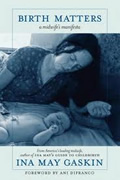On Etsy: https://www.etsy.com/ca/listing/162122961/blessingway-bead-lake-water-goddess
Tag: procreation
Beading: Blessingway bead – Fire Opal Goddess
Beading: Blessingway bead – Faery Garden Goddess
Beading: Blessingway bead – Emerald Tree of Life
Beading: Blessingway bead – Young Leaf Tree of Life
Beading: Blessingway bead – Earth Goddess
Beading: Blessingway bead – Blooms and Tree of Life
Beading: Blessingway bead – Blooming Birth Goddess
Beading: Blessingway beads
Book: Connected Parenting, by Jennifer Kolari

Title: Connected Parenting: How to Raise a GREAT Kid
Author: Jennifer Kolari
Source: Veddma library
ISBN: 978-0-14-316877-5
Available online
Notes: The author stresses that empathy is the key to raising a child.
The formula to correct a child’s behaviour is:
1) Mirror to show you understand the child’s feelings.
2) Present a disciplinary problem and explain why the behaviour is unacceptable.
3) Find a solution by either suggesting a course of action or imposing a consequence.
She introduces the CALM acronym for her parenting strategy:
Connect – show undivided attention.
Affect – genuinely match the child’s tone of voice, body language, facial expression.
Listen – listen attentively and carefully to the exact words the child is using.
Mirror – bring it all together.
Sometimes if the relationship has been deteriorating for a long time, you first have to repair the bond with the child. This can be done via baby play (playing with the child as if they are a baby again), parenting together with your partner or other family members, being sincere even when you have to admin you were wrong, and remembering that it is never too late to repair the relationship.
To keep the child happy and well-behaved, spend time with the child (just like you would if you wanted to maintain any other relationship): play with the child regularly, give them all your attention, catch them when they are being good and commend their achievement, try not to say “later” too much: it does not take long to bring your child to a happy place.
To set appropriate limits which every child needs, you must find a medium between an all-permissive and an all-forbidding approach. All children need limits, otherwise the world is too uncertain for them, and they do not want to be in charge. Do not be embarrassed by the child misbehaving in public and do not ignore it or the behaviour will escalate. Address the issue and remove the child from the situation if necessary.
Say what you mean and mean what you say. If you promised the child a consequence for a specific action, you must enforce the consequence if the child chooses to perform the action. This means that the consequence should be the one you are willing and able to enforce. Setting limits prepares children for life: if they know what the appropriate behaviour in the situation is, they feel more in control and can make better decisions.
Get familiar with your own limits and triggers, and monitor your own stress level so you do not overreact. Decide on the behaviour’s category: is it a red-light behaviour (absolutely unacceptable, endangering life or health), green-light behaviour (nothing earth-shattering), or yellow-light behaviour (something that is ok in exceptional circumstances). Familiarize your child with the system, and explain that red-light behaviours will not be tolerated, and yellow-light behaviours can be ok only once in a while, upon your permission). That way the child knows the limits before they overstep them.
The author mentions front-loading and intervention as two strategies for containment. Front-load: let your child know what to expect, know when the situation is going to be tough to handle for a child (such as sitting still for 2 hours at a restaurant) and plan in advance to mitigate the situation. For multiple children, present the concepts of “friendship moves” (statements or actions encouraging friendship) versus “friendship blocks” (statements or actions hurting feelings and deteriorating friendship). Explain that you expect them to perform friendship moves toward each other. Acknowledge and encourage instead of threatening or bribing.
Intervention involves planning for the worst: you explain the exact situation and consequences to the children up-front and if they do not do what you require, you carry through with the consequence. If that means leaving the restaurant in the middle of dinner without letting kids enjoy food or dessert, then that is what you do in case they go against what you have requested them to do. This provides the child with a lesson to be learned, and next time they will know you mean what you say and you are prepared to go through with the consequence.
The author suggests different approaches to intervention: cure the bad behaviour with kindness, laughter, imaginary play, and cuddling – a child who feels loved will be more likely to listen to you. If a child throws a tantrum and does not react to calming techniques, allow them to continue the tantrum in a safe space and without an audience. That will likely make it boring and the child will stop. Play an adrenaline-releasing game (chasing, hiding, tumbling) to let the child discharge their excess energy and release their emotions. Making an observation and walking away instead of saying “no” leaves the child to think about the situation and make their own decision. For younger children distraction is a good technique. If one technique does not work, try another. What did not work today might work tomorrow.
The book goes into details of special situations (homework, bathroom routines, getting dressed), modifying the mirroring techniques for special-needs children, and troubleshooting common problems.
Overall a good book on parenting coming from a place of compassion, understanding, and setting limits. It contains lots of examples of specific situations and ways dialogues with children develop, and presents possible solutions.
Beading: Blessingway bead – Spring Goddess
Beading: Blessingway bead – Red Flame Goddess
Beading: Blessingway bead – Faery Spring Goddess
Beading: Blessingway bead – Blooming Flower Goddess
Beading: Blessingway bead – Emerald Flower Goddess
Book: Birth Matters: a midwife’s manifesta, by Ina May Gaskin

Title: Birth Matters: a midwife’s manifesta
Author: Ina May Gaskin
Source: Veddma library
ISBN: 978-1-58322-927-9
Available online
Notes: As always, Ina May does not disappoint. This book brings forth a deep discussion of the importance of birth in lives of children being born, mothers giving birth, and families. It talks about demonization the midwifery profession has received with the rise of male-driven obstetrics and an unbending medical system with monetary goals at its forefront. It calls all of us to grasp the scale of maternal and infant mortality, and help lower it by instituting standardized reporting on causes and circumstances of birth-related deaths.
Ina May calls to feminists not interested in motherhood, who have distanced themselves from maternal health issues, to consider that the right of a woman to have a safe birth is as important as the right to choose whether to have children. “We need to deepen our understanding of where we have been as women in the past and how the past has shaped and often distorted our knowledge of our bodies and ourselves, especially in the realm of pregnancy and birth.” “The way a culture treats women in birth is a good indicator of how well women and their contributions to society are valued and honored.”
The book is full of research findings and statistics on birth matters: C-section rates (90-95% in Brazil, for instance, contrasted by about 30% in US, versus 10-15% maximum recommended by the World Health Organization, and 2-3% as reported by some communities with births assisted by midwives); maternal mortality (US has worse maternal death rates than Cuba, Bulgaria, Hungary); history of introduction of certain “labour-assisting” drugs and medical procedures which have proven to cause numerous complications, but are still being taught in medical schools and applied in the field; – this book is a wealth of information.
There are fewer birth stories in this book than in the “Spiritual Midwifery” or the “Ina May’s Guide to Childbirth“, since the emphasis of this book is on research. However, there are numerous examples illustrating the ability of the female body to labour and birth without interventions. Ina May does touch on the importance of birth stories: without them women do not know what a normal birth is, and are often subjected to unnecessary interventions that are likely to lead to unneeded surgery and birth trauma. The media portrayals of birth as almost always an emergency that requires being rushed to a hospital and attended upon by a team of doctors, who apply all imaginable instruments and techniques (forcepts, vacuum, scalpels, monitors, epidurals, episiotomies, drugs) to save the woman’s life and extract the baby, lead to families being scared of birth, believing that women are unable to birth unassisted, and they end up undergoing similar experiences. Birth stories show us the reality of childbirth, the variety of experiences, and make us realize that birth cannot be put on a conveyer (approach that is so pervasive in a hospital setting), bound to a clock, and forced to progress despite the woman’s body, instead of harnessing its abilities to birth without intervention.
Ina May also touches on the principles of the natural birth movement, including normalcy of birth, empowerment and autonomy of the woman, and avoiding unneeded routine procedures. She also covers the principles of humanized birth, in which health professionals work together in harmony to assist the woman in birth while leaving her in control of all decisions.
For those who care about health of the women and babies in their lives, and who wish to dig deeper into the history and research surrounding birth, hospital practices, unneeded interventions, the importance of the midwifery profession, and preservation of the birth-related knowledge, this book will answer many questions and provide references to more resources. I also highly recommend Ina May’s film “Birth Story” about The Farm midwives, which further discusses the development of medicalized birth and the impacts it has on birth outcomes, while showing how one community took birth into their own hands and produced way better outcomes than those of US hospitals.









































